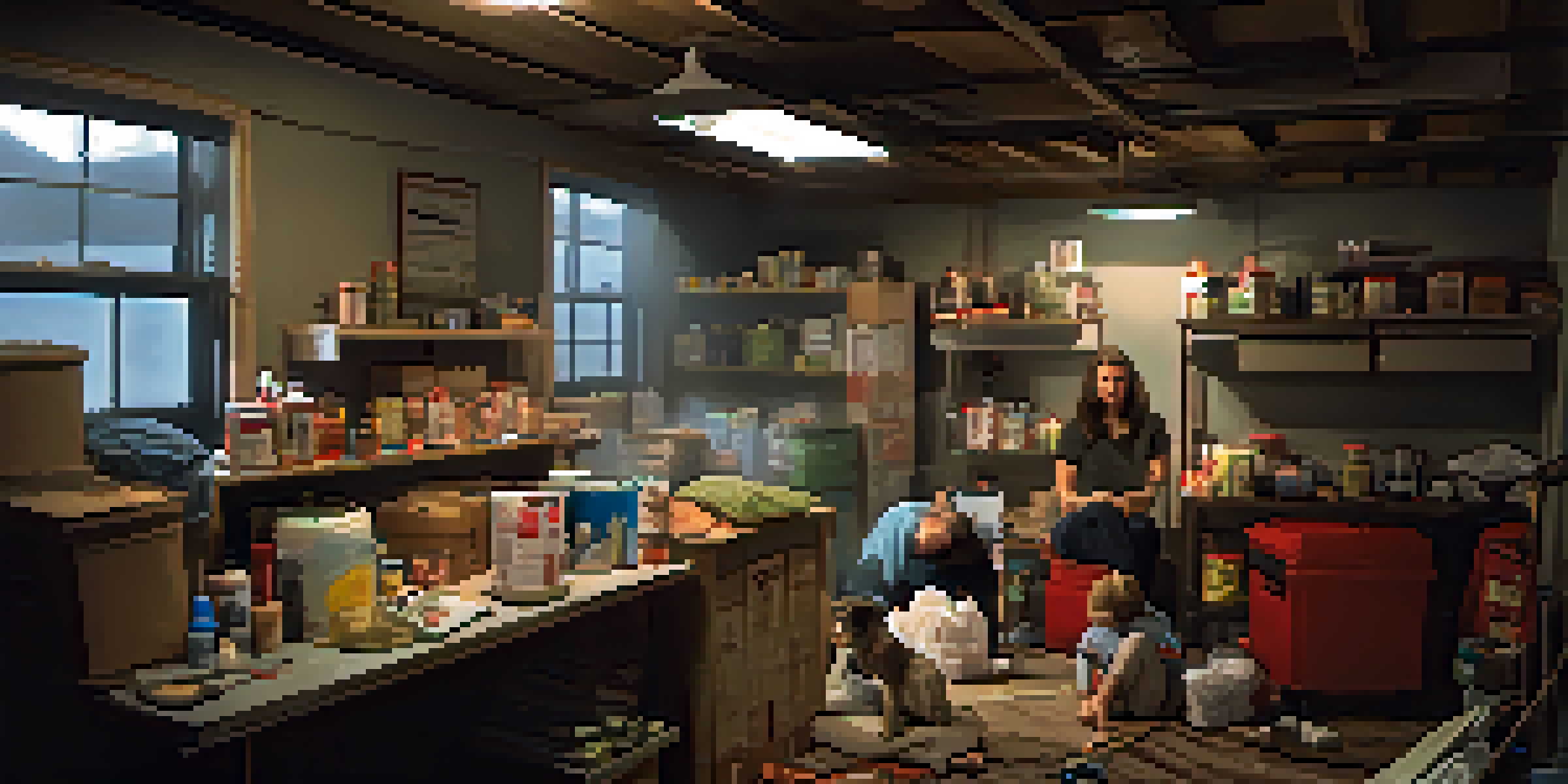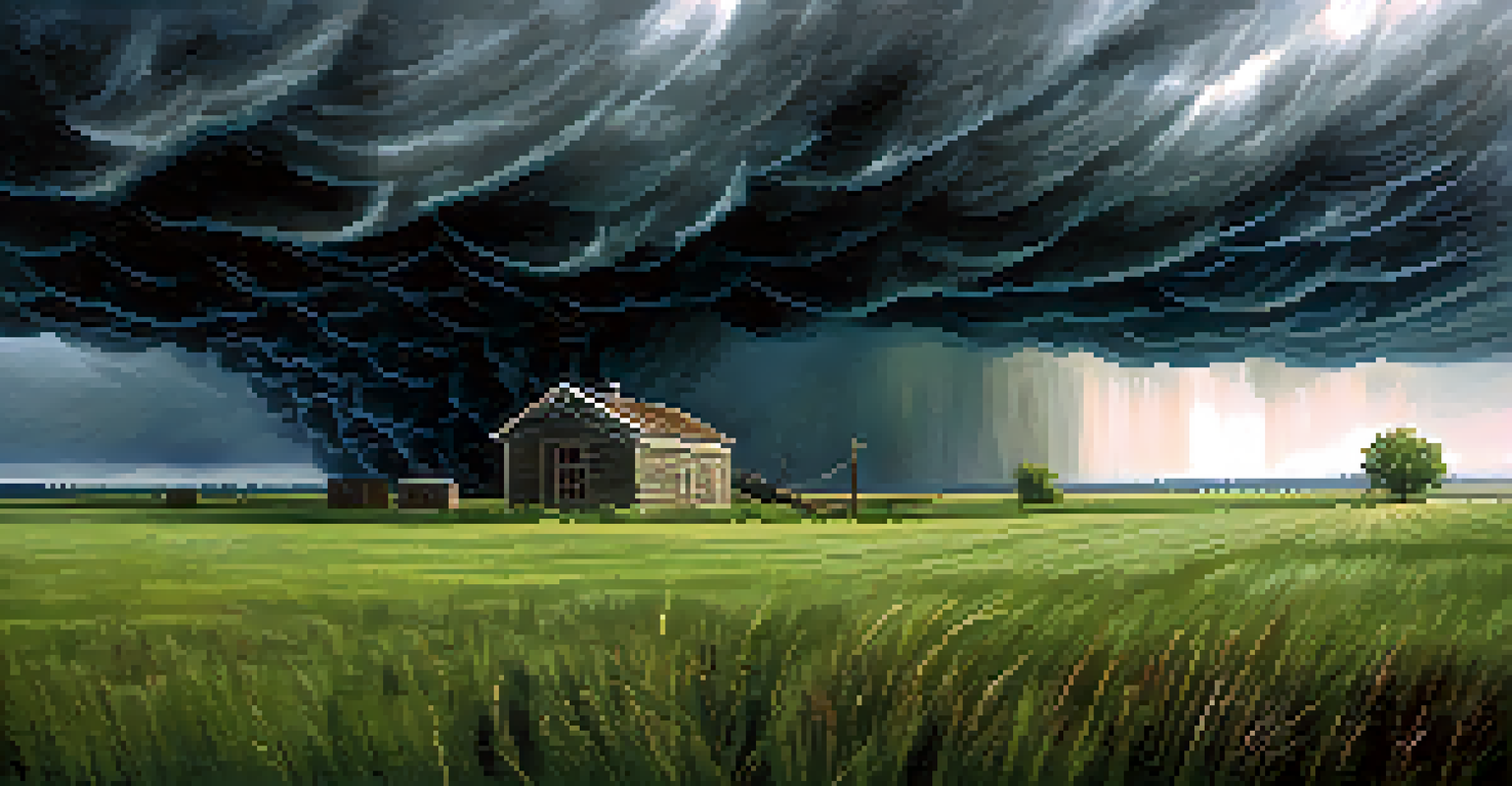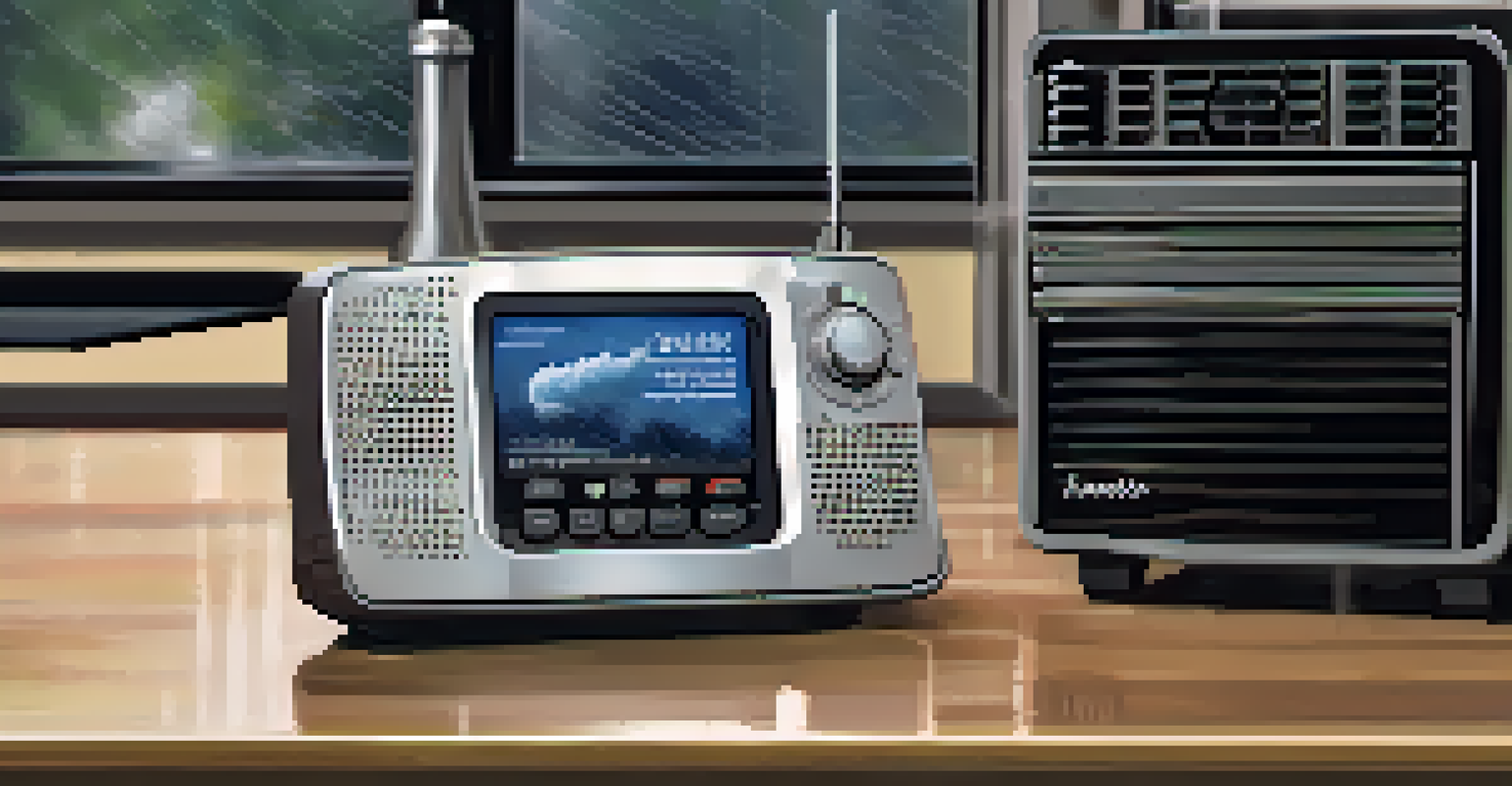Protecting Yourself During Tornado Warnings: Key Tips

Understanding Tornado Warnings and Alerts
Tornado warnings can come with little notice, making it crucial to understand what they mean. A tornado watch indicates that conditions are favorable for tornadoes, while a warning means a tornado has been sighted or indicated by radar. Knowing the difference can help you react appropriately and quickly.
The best way to predict the future is to create it.
Stay tuned to local weather reports and alerts through radio, television, or smartphone apps. Reliable weather sources will provide updated information on the tornado's path and intensity. This will allow you to make informed decisions about where to seek shelter.
In addition to official alerts, consider having a NOAA Weather Radio. This device emits alerts even during power outages, ensuring you're always in the loop about severe weather threats.
Create a Family Emergency Plan
Having a family emergency plan is essential for keeping everyone safe during a tornado. Discuss where each family member should go when a warning is issued, such as a basement or an interior room on the lowest floor. This ensures that everyone knows exactly what to do, reducing panic in the moment.

Practice tornado drills to make sure everyone remembers the plan. Just like fire drills, these practices help familiarize everyone with the steps they need to take, making the process smoother during an actual emergency.
Understand Tornado Alerts
Knowing the difference between a tornado watch and warning can help you respond quickly and appropriately.
Additionally, consider designating a safe meeting spot outside your home in case you get separated. This could be a neighbor’s house or a designated tree in a nearby park, giving your family a clear point to regroup after the storm.
Identify Safe Locations in Your Home
During a tornado, finding a safe location in your home can be a lifesaver. Ideally, you should choose a basement or storm cellar, as these areas provide the most protection from flying debris. If you don’t have a basement, an interior room on the lowest level, away from windows, is your next best option.
In the midst of chaos, there is also opportunity.
Avoid staying in places like mobile homes or vehicles, as they offer little protection against tornadoes. If you find yourself in such a situation, seek sturdy buildings nearby or lie flat in a low-lying area to minimize your risk.
Remember to keep your safe locations stocked with emergency supplies, such as water, flashlights, a first aid kit, and blankets. These items can make a significant difference if you need to stay put for an extended period.
Stay Informed with Technology
In today's digital age, technology plays a vital role in keeping you informed during severe weather. Smartphone apps that provide real-time alerts can give you a heads-up about incoming tornado warnings. Ensure you have notifications enabled so you can receive updates immediately.
Social media can also be a valuable tool for staying informed. Follow local weather services and organizations on platforms like Twitter or Facebook to receive continuous updates and safety tips during a tornado event.
Create an Emergency Plan
Having a family emergency plan ensures everyone knows where to go and what to do during a tornado.
Additionally, consider investing in a weather radio or a home weather station for real-time updates, especially if you live in an area prone to tornadoes. These devices can provide critical information when other forms of communication may fail.
Gather Essential Emergency Supplies
Having an emergency supply kit ready can make a world of difference during a tornado warning. Start with the basics: water, non-perishable food, and a flashlight with extra batteries. These items will keep you safe and comfortable if you need to shelter for an extended period.
Don’t forget other important supplies, such as a first aid kit, medications, and copies of essential documents. These items are crucial for your health and safety during emergencies, especially if you have specific medical needs.
Finally, consider including a whistle or signal device to alert rescuers if you become trapped. Being prepared with these supplies can provide peace of mind and ensure you're ready for whatever comes your way.
Protect Yourself from Flying Debris
One of the biggest dangers during a tornado is flying debris. To protect yourself, cover your head and neck with your arms and seek shelter under something sturdy, like a heavy table or workbench. This can help shield you from any objects that may be propelled by the tornado's winds.
If possible, wear a bike helmet or any protective gear you have on hand. Even a thick blanket can offer some level of protection against flying debris. Remember, it's better to have something than nothing at all.
Gather Essential Supplies
An emergency supply kit with food, water, and first aid items is crucial for safety during a tornado.
Avoid standing near windows or doors, as these areas are particularly vulnerable during a tornado. Keep yourself as far away from potential hazards as possible to reduce your risk of injury.
After the Tornado: Safety First
Once the tornado has passed, it's essential to proceed with caution. Stay tuned to local news for updates on the situation and information about emergency services. Assess your surroundings carefully before venturing outside, as there may be hazards like downed power lines or unstable structures.
If you encounter any injuries, administer first aid if you are trained to do so. If the injuries are severe, contact emergency services immediately. Remember to prioritize your safety and that of others around you.

Finally, check in with family and neighbors to ensure everyone is accounted for. This sense of community can be invaluable in the aftermath of a tornado, as you work together to recover and support one another.